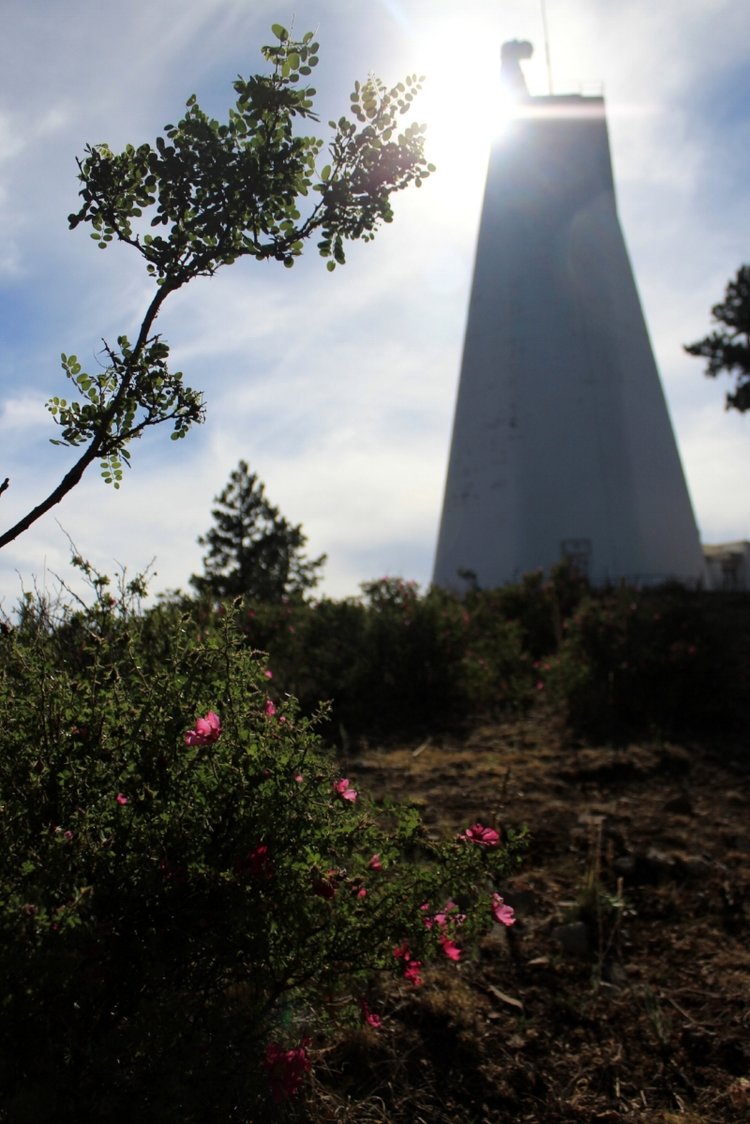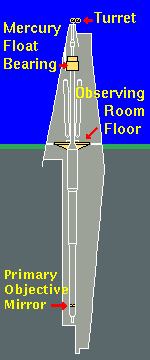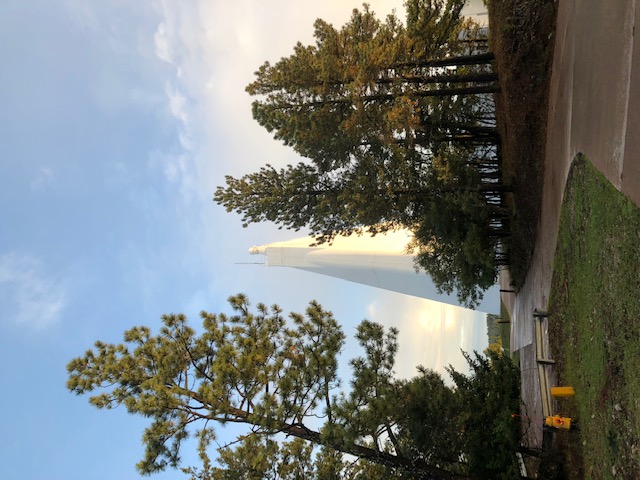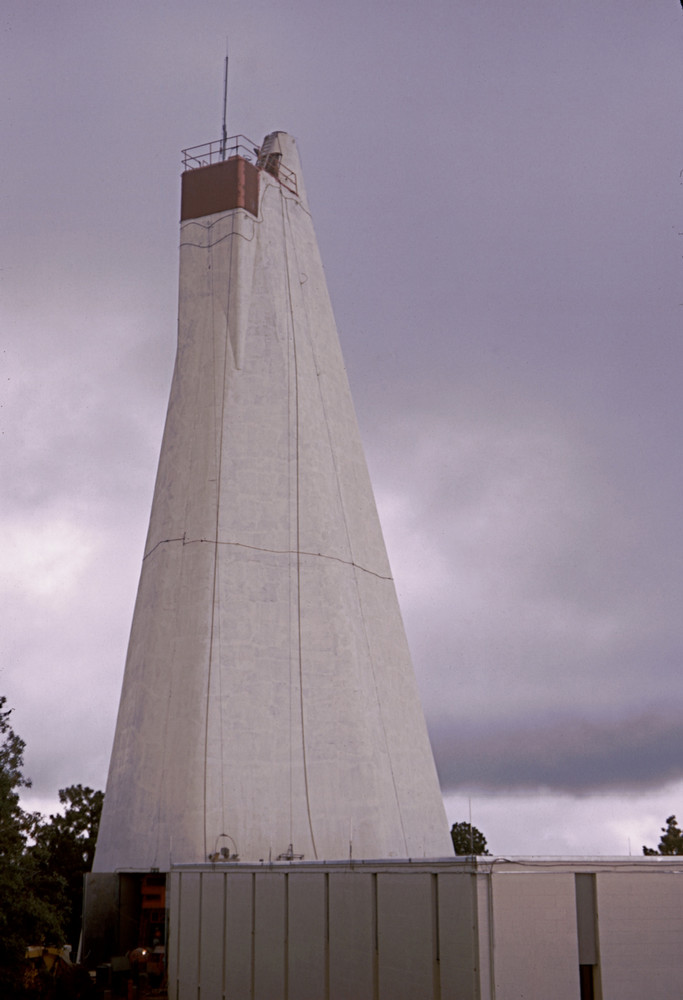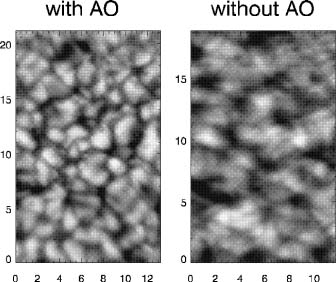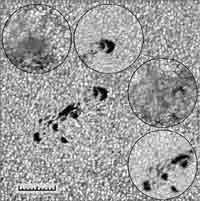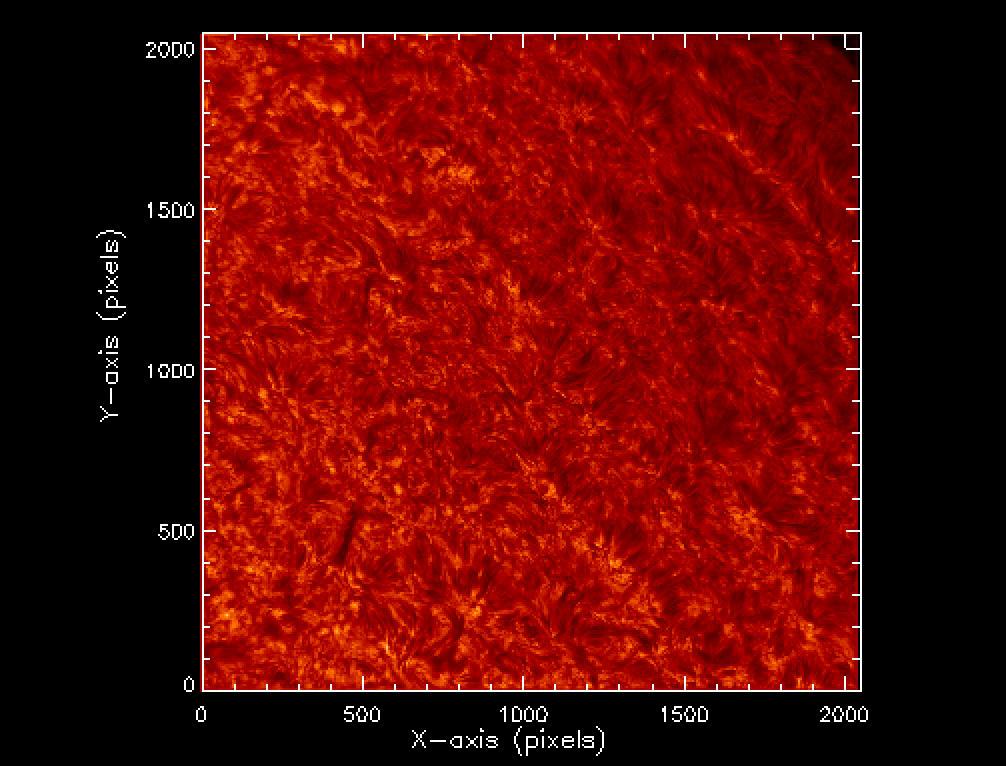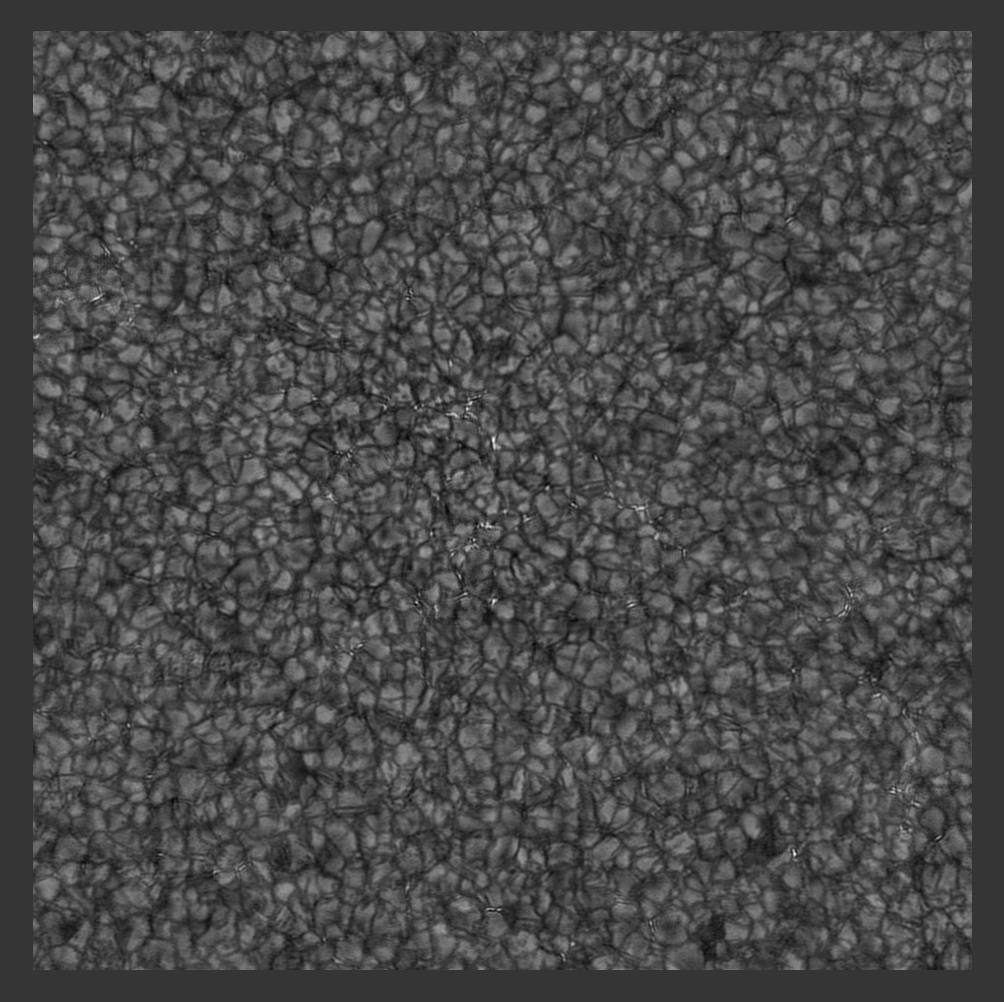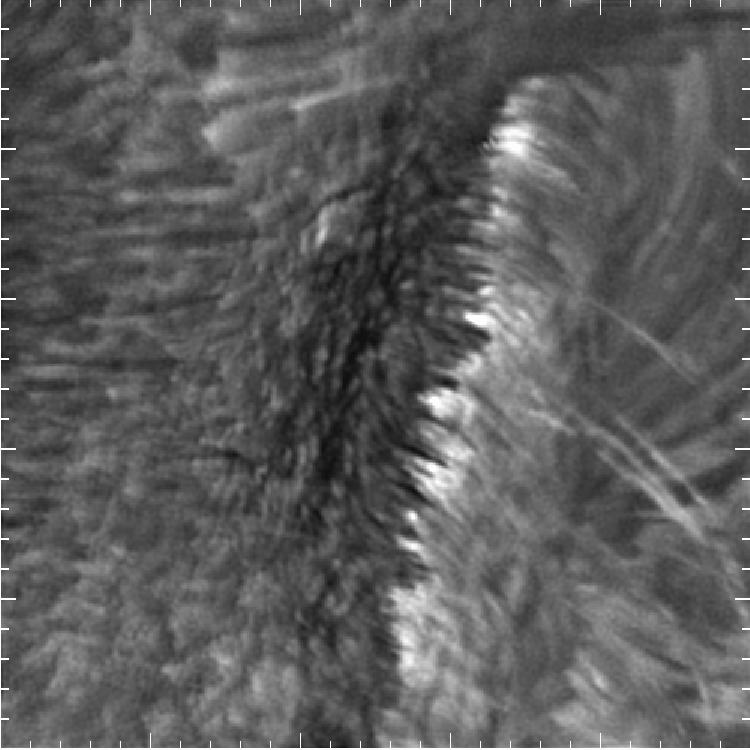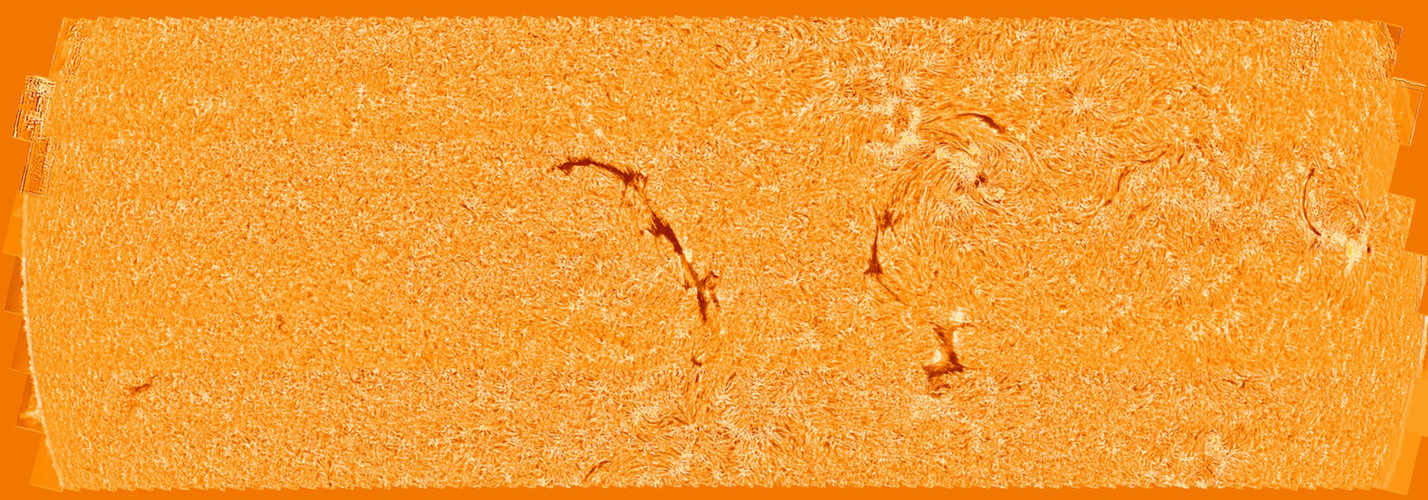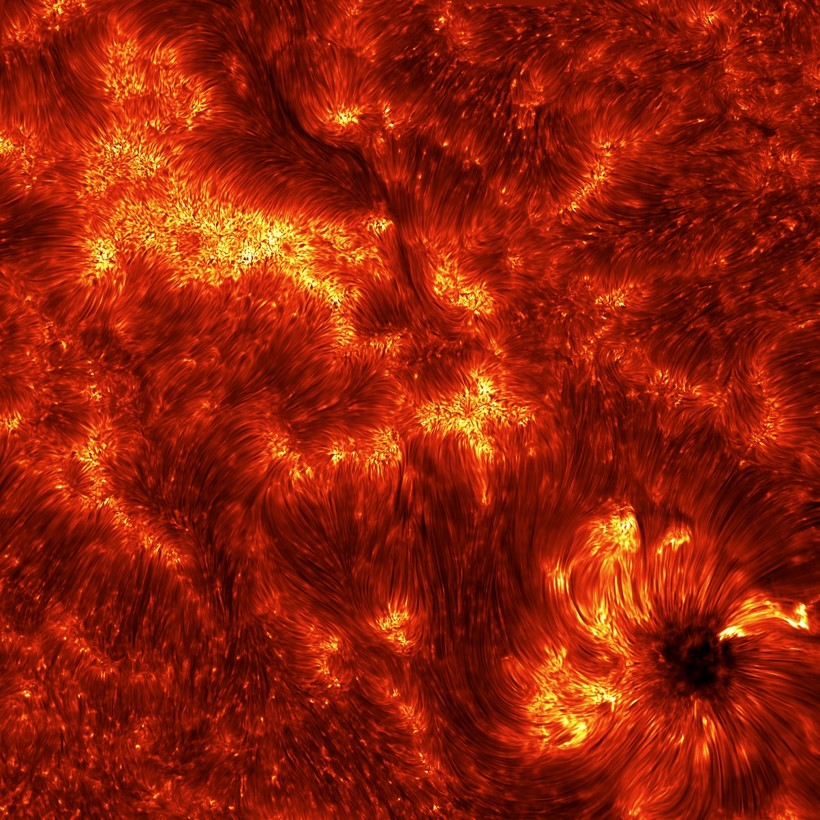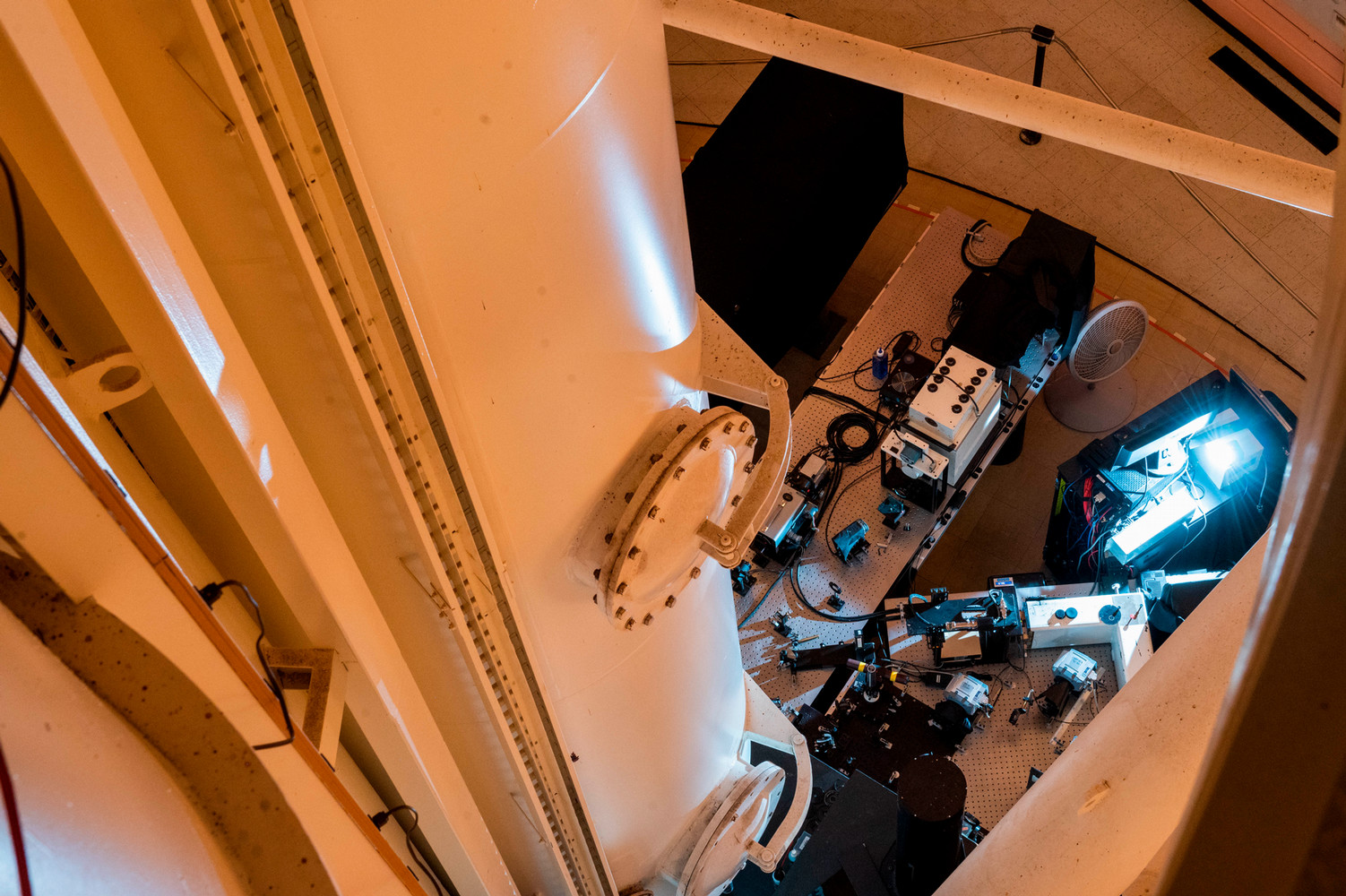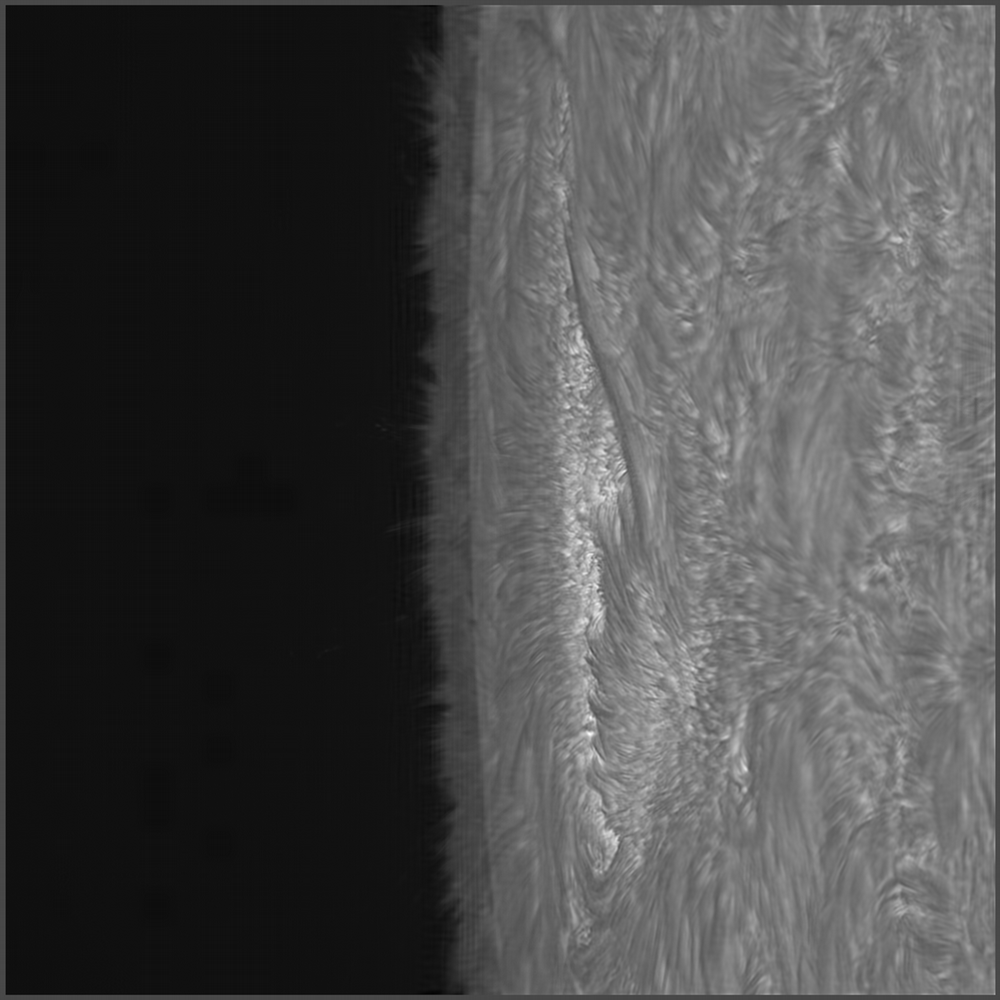Richard B. Dunn Solar Telescope (DST)
The Richard B. Dunn Solar Telescope, abbreviated as the DST, is a unique vertical-axis solar telescope, located on the western edge of Sunspot overlooking the Tularosa Basin. Originally named the Vacuum Tower Telescope on October 15, 1969, the Dunn Solar Telescope was renamed in 1998 to honor a retiring solar astronomer, Richard B. Dunn, who was the driving force behind its construction. Regarded as one of solar astronomy's most creative instrument builders, Dunn played a large role in designing some of DST's defining features: the vacuum tube light path.
What does it look like?
How does it work?
The optical path starts at a heliostat on top of a 136-foot-tall (41 m) concrete tower and continues 193 feet (58.8 m) more underground to the primary mirror, which is 64 inches (1.6m) in diameter. It then returns to one of six quartz optical windows on the floor of an optical laboratory at ground level, where the scientific instruments are located. The entire optical path is kept in a vacuum to eliminate distortion due to convection in the telescope that would otherwise be caused by the great heat produced by focusing the light of the sun. The telescope tube, optical laboratory, and instruments are connected as a single freely-rotating platform, weighing over 250 tons (500,000 pounds) and floating on 120 gallons (454 liters) of liquid mercury.
The DST employs a vacuum for obtaining a clear view of the sun. In most solar telescopes, astronomers have the problem of sunlight heating the air in the telescope tube. This causes the air to move about in the tube and makes the image of the sun blur and change position. To eliminate this problem, the air has been drawn out of the tube of the telescope, creating an almost total vacuum. In this manner, the sunlight under study in the telescope travels an almost air-free optical path.
In spite of its complexity, the telescope is quite a simple instrument, consisting basically of three mirrors, two windows, and an evacuated optical path. Sunlight enters the tower through a 30-inch (76-centimeter) window located 136 feet (41 meters) above the ground. By placing the window so high up, we avoid distortion of the solar image from local air turbulence near the ground. There, a pair of movable 44-inch (1.1-meter) mirrors direct the sunlight down the 48-inch (1.2-meter) diameter tube that runs vertically down the connecter of the observing room. At 180 feet (55 meters) below the observing room floor, the sunlight is reflected from the concave 64-inch (1.6-meter) main mirror of the telescope back up to the observing room, producing a 20-inch (51-centimeter) diameter image of the sun for detailed studies.
Inside the observing room is an array of electronic equipment that controls the positioning and operation of the telescope, its spectrographs, and other instruments.
What kind of research is conducted at DST?
The DST is designed to observe extremely small features in the sun's surface or photosphere, and in the lower atmosphere, or chromosphere. In fact, many of the features studied by this telescope are too small to be seen in other solar telescopes. The resolving power of the telescope, in astronomer's terms, is better than 1/4 of a second of arc, equivalent to reading an automobile license plate 60 miles away. The better we can see the sun and its finer details, the better we will be able to understand it.
The telescope's entire optical system - from the top of the Tower to the base of its underground portion - plus the 40-foot (12-meter) diameter observing room floor, is suspended near the top of the Tower by a mercury-float bearing. The bearing in turn is hung on three bolts, each only 3 inches (76 millimeters) in diameter. Although the telescope is longer than a football field and weighs over 250 tons (500,000 pounds), the mercury-float bearing enables the image of the sun to be rotated by simply rotating the entire instrument. This brings portions of the sun in line with auxiliary instruments and keeps the always-moving sun effectively "still" for observations. So delicate is the float suspension that when the drive motor is turned off, a gentle push will turn the entire instrument.
Research astronomers from many institutions and organizations visit the DST to install and test instruments and perform data collection. The telescope's unique open optical bench system is what gives astronomers the ability to use such a variety of instruments, making it especially important to astronomy research. The data collected at DST has helped many astronomers discover new insights about the Sun, which have been published in several research articles.
Who owns and operates the telescope?
The telescope was originally built by the United States Air Force, who completed its construction in 1969. Following several years of operation, ownership of the observatory was transferred in 1976 to the National Solar Observatory (NSO), part of the National Science Foundation. The NSO carried out research of the Sun as an astronomical object in Sunspot from 1976 to 2017. The telescope was highly prolific scientifically, and during the height of operations, a new instrument setup was built roughly every ten days.
